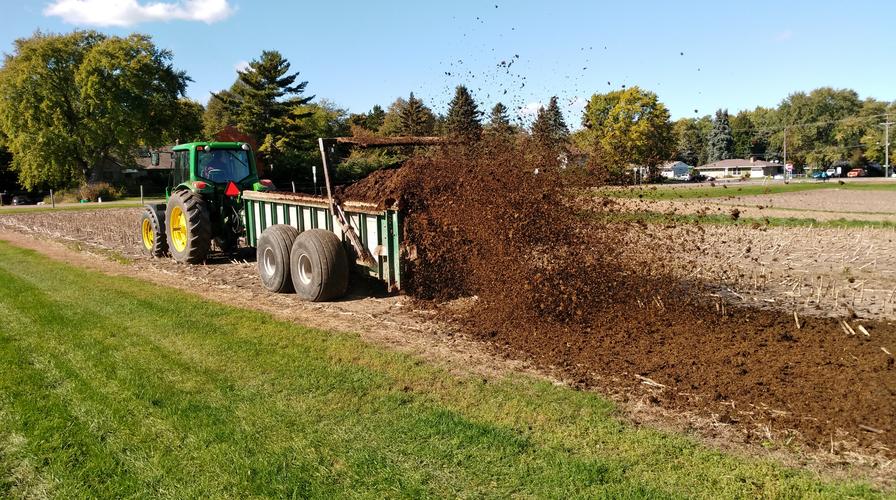Improved Manure Management
Effective manure management is crucial for reducing greenhouse gas emissions from agricultural activities. Innovations in manure management technologies can significantly mitigate environmental impacts and improve sustainability in farming practices.

Learn about manure management from the University of Minnesota Extension
View open jobs in this Solution
Example Organizations
- United States Environmental Protection Agency (EPA) - Provides guidelines for efficient manure management.
- United States Department of Agriculture (USDA) - Supports sustainable agricultural practices.
- National Renewable Energy Laboratory (NREL) - Innovates in renewable energy and sustainable agriculture.
- Natural Resources Conservation Service (NRCS) - Offers technical assistance for conservation practices.
- The Climate Group - Advocates for climate solutions, including improved manure management.
Overview
The EPA’s Agricultural Waste Management Field Handbook provides comprehensive guidelines for efficient manure management, emphasizing its benefits, the available management systems, and their design and operation. Breakthrough technologies to bolster manure management and curtail greenhouse gas emissions include Anaerobic Digestion, Covered Lagoon, Nutrient Management Planning, Phosphorus Recovery, Manure Injection, and Manure Separation.
Progress Made
Significant advancements have been made in improving manure management:
- Anaerobic Digestion: Converts manure into biogas, reducing methane emissions and producing renewable energy.
- Covered Lagoons: Capture methane emissions from manure storage for energy production.
- Advanced Manure Application: Techniques like manure injection reduce nutrient runoff and improve soil health.
Key organizations pioneering these advancements include:
- United States Environmental Protection Agency (EPA)
- United States Department of Agriculture (USDA)
- National Renewable Energy Laboratory (NREL)
Solutions by Sector
Anaerobic Digestion
- Biogas Production: Converting manure into biogas for renewable energy.
- Digestate Management: Utilizing the byproduct of anaerobic digestion as a nutrient-rich fertilizer.
- Integrated Systems: Combining anaerobic digestion with other renewable energy sources.
Case Studies:
- DVO, Inc.: Implements anaerobic digestion systems on farms to produce biogas (DVO, Inc.).
- Vanguard Renewables: Develops farm-based anaerobic digestion projects to produce renewable energy (Vanguard Renewables).
- Quantum Biopower: Operates anaerobic digestion facilities to convert organic waste into biogas (Quantum Biopower).
Nutrient Management
- Nutrient Management Planning: Optimizing the application of manure to crops to reduce nutrient runoff.
- Phosphorus Recovery: Extracting phosphorus from manure for use as a fertilizer.
- Manure Injection: Injecting manure directly into the soil to reduce emissions and improve nutrient uptake.
Case Studies:
- Sustane Natural Fertilizer: Produces organic fertilizers from manure and other organic waste (Sustane Natural Fertilizer).
- Agri-Tech Producers: Develops technologies for nutrient recovery from manure (Agri-Tech Producers).
- BioFiltro: Uses worm-based systems to treat manure and recover nutrients (BioFiltro).
Manure Separation and Storage
- Solid-Liquid Separation: Separating solids from liquid manure to reduce volume and improve handling.
- Covered Storage: Using covers on manure storage facilities to capture and reduce emissions.
- Composting: Converting manure into compost to improve soil health and reduce emissions.
Case Studies:
- Daritech, Inc.: Provides manure separation and handling equipment for dairy farms (Daritech, Inc.).
- GHD, Inc.: Develops manure management systems, including solid-liquid separation (GHD, Inc.).
- Eisenmann Corporation: Offers composting systems for manure management (Eisenmann Corporation).
Lessons Learned
- Manure Management: Paramount in slashing greenhouse gas emissions from agricultural activities.
- Economic Viability: Practices must save money for farmers or generate revenue to ensure adoption.
- Social Acceptability: Practices should not create nuisances or health/environmental risks.
- Stakeholder Involvement: Engaging all stakeholders, including farmers, scientists, and policymakers, is essential for success.
Challenges Ahead
- Large-Scale Application: Enabling the widespread adoption of improved manure management practices.
- Education and Training: Informing farmers and stakeholders about the benefits and techniques of improved manure management.
- Infrastructure and Investment: Providing the necessary infrastructure and financial support for broad-scale acceptance.
Best Path Forward
- R&D Investment: Pour resources into research and tech development through diverse funding models.
- Large-Scale Implementation: Government-backed incentives, regulations, and awareness initiatives can facilitate wide adoption.
- Public Awareness: Amplify public awareness about the advantages of improved manure management.
- Policy Support: Collaborate with governments to establish incentives for farmers.
Image credit: University of Minnesota Extension